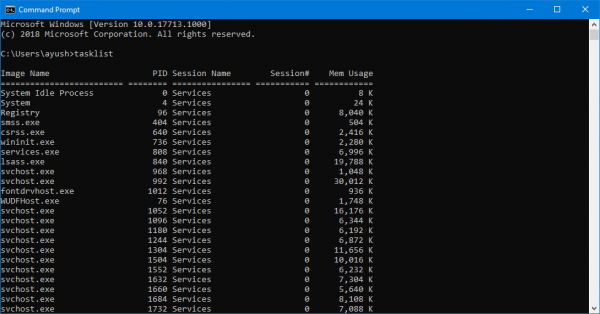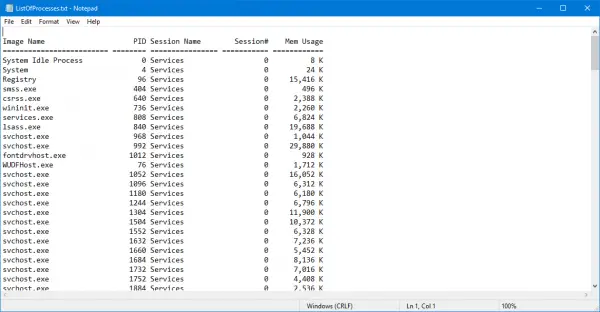People often tend to make the most of their computers. And while doing it, it is highly possible for the computer to run into issues. These issues can be related to the overall performance of the computer or even create an unstable environment for the tasks to be carried out. All these issues often are looked up for in the processes inside of the Task Manager. Some power users also use third-party applications like Process Explorer or TaskSchedulerView to do the same because it provides some additional features that help them do their work at very ease. So, these third-party companies help these users to troubleshoot the issues very easily. But when it comes to sharing these process lists with others to keep a check on any unusual activities, people often tend to face some struggles. But Microsoft has got you covered. Microsoft has shipped a tool called TaskList inside of Windows that will help you save a list of these processes to a text file or even view it inside of the Command Prompt.
There are some additional things like filtering out processes that you can do with this which we are going to talk about in this article.
Use TaskList to save Windows Processes to a Text file
TaskList displays a list of currently running processes on the local computer or on a remote computer.
First of all, you would have to open Command Prompt. You can do this by searching for Command Prompt in the Cortana Search Box or just hitting the WINKEY + X button combination and clicking on Command Prompt. You need not run the Command Prompt with Administrative privileges to do this.
Now, just type in tasklist. This will list up all the tasks with their Process IDs, Session Type, Name, Memory Usage and Session Number.

You can scroll over vertically inside the Command Prompt to check through all these Processes.
Now comes the time when you need to share this list with others or just to save it for your use in the future.
For this just type in the following command,
tasklist > D:\ListOfProcesses.txt
This command can be segregated as: tasklist > <path>
It is worth noting that you would not be able to save this file in any location that lies in the C:\ partition or the primary Operating System Partition until you run the Command Prompt with Administrator level privileges.

Not only TXT but this program also supports saving of these processes to various file extensions. You can use commands like tasklist /fo csv in order to display the list of processes in a comma-separated format instead.
Sometimes, you just need to filter out what you save in the TXT file. Maybe you need to see processes that are using the memory over a particular threshold, or maybe the ones with the Process ID over 500 and more. So, you can do this too.
Here are some commands that can be used to filter out stuff in the whole big list of tasks:
- tasklist /fi “USERNAME eq Ayush”: This command will help you filter out processes that are running under the name of the user called, Ayush.
- tasklist /fi “USERNAME ne NT AUTHORITY\SYSTEM” /fi “STATUS eq running”: This command will help you filter out processes that are running under the system process.
- tasklist /fi “MODULES eq ac*”: This command will help you to filter out processes that have a DLL that begins with ac.
- tasklist /fi “PID gt 500”: This command will help you to filter out processes that have their process ID greater than 500.
- tasklist /fi “MEMUSAGE gt 2048”: This process will help you to filter out processes that have their Memory Usage more than 2MBs.
These filtering commands can also be combined with different parameters to filter out even more. For example,
tasklist /s BasementComp /svc /fi "MEMUSAGE gt 2048
This command will help users to list all the processes tom the remote computer called as BaseComp which use more than 2MB of RAM. Also, you can just save all these filtered out processes into a TXT file using the > <PATH> front of any filtering out commands.
You can learn more about this tool here on Microsoft Docs.